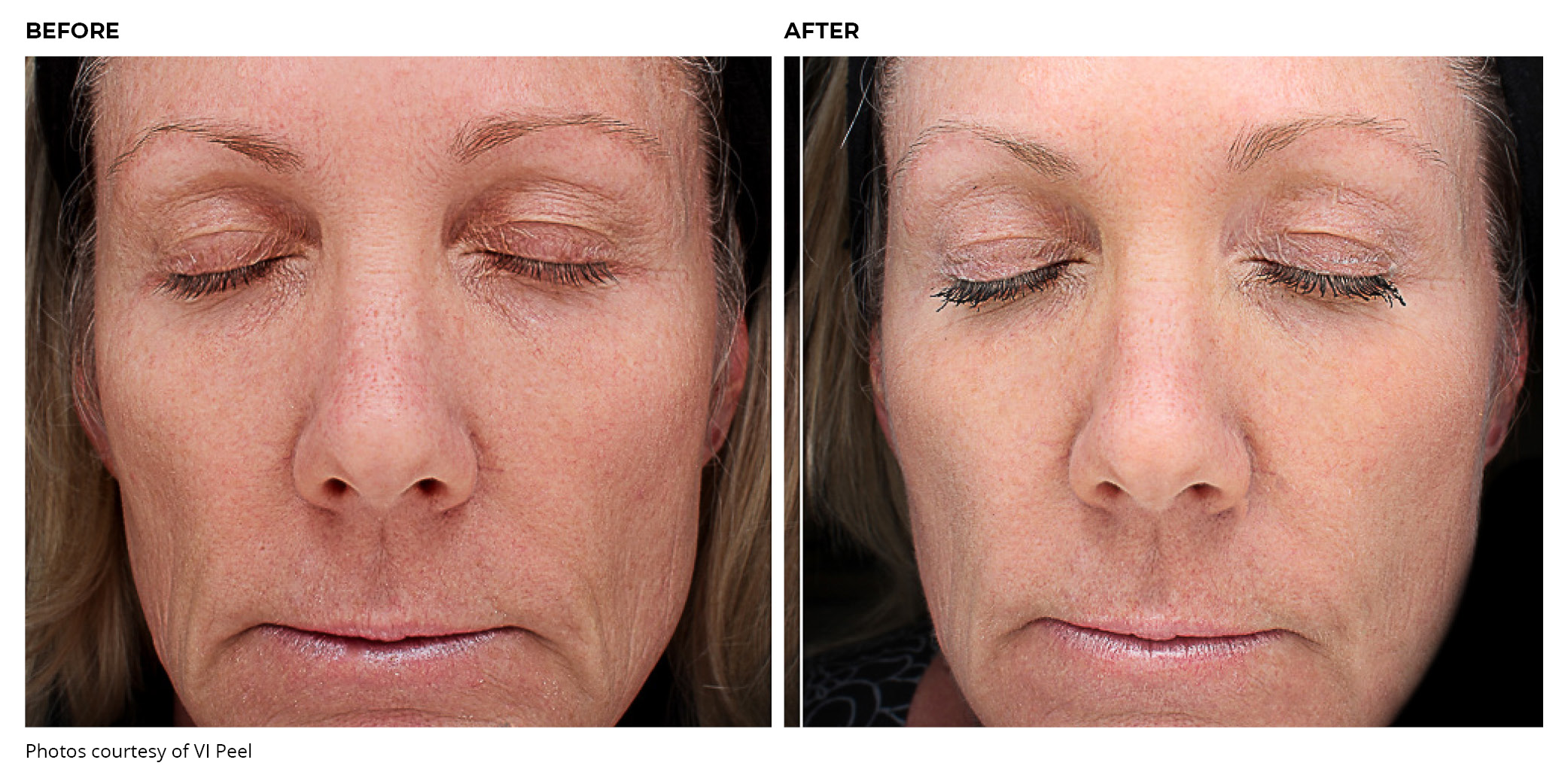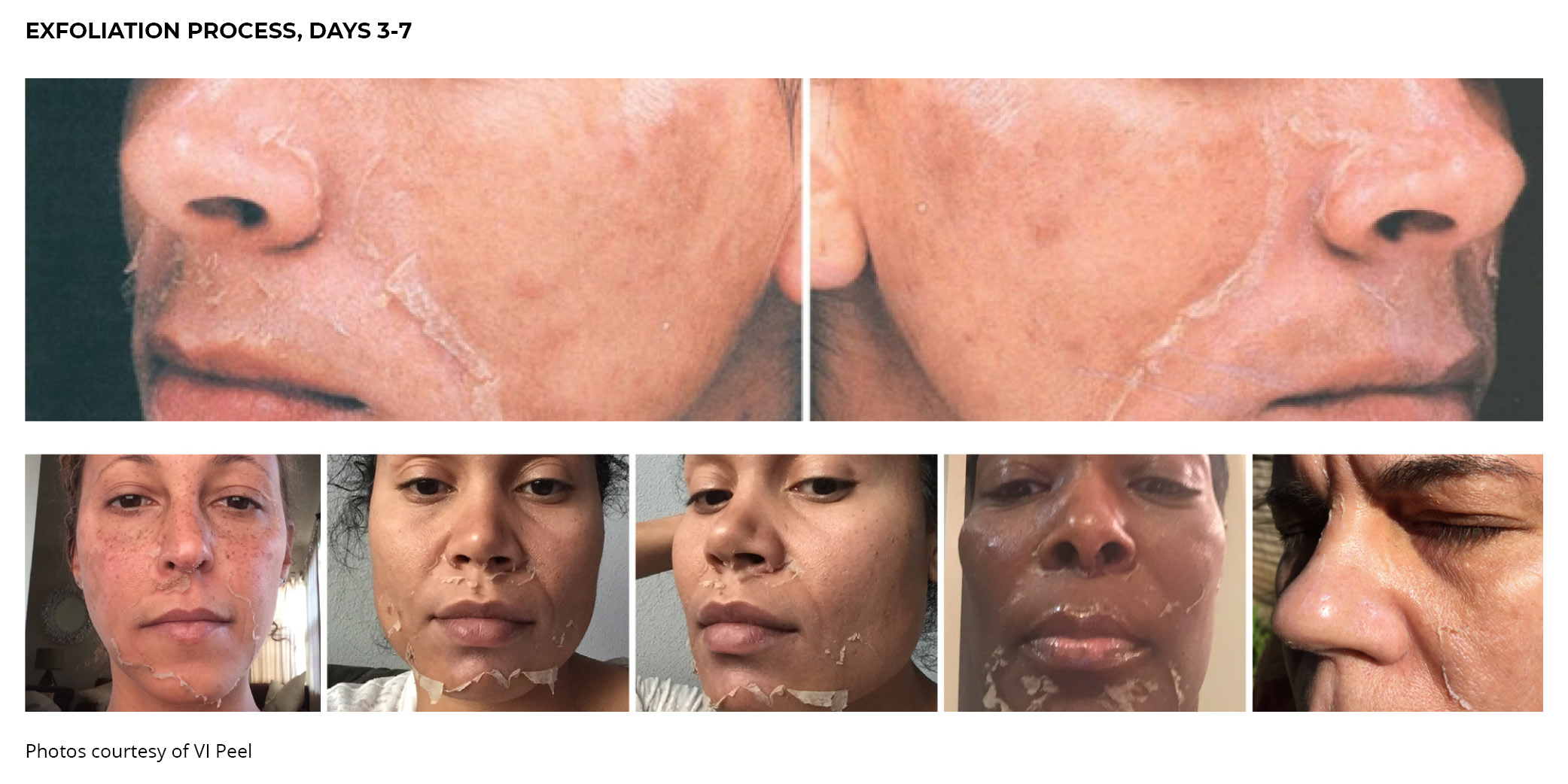Peraza Dermatology Group offers acid peels of varying strength levels to treat wrinkling, acne, enlarged pores, and uneven pigmentation due to sun damage and melasma. Treatments are personalized to address specific skin types and conditions to ensure the correct peel will give the results you want.
What is it?
Superficial chemical (salicylic acid, glycolic acid, and trichloroacetic acid) peels are used to treat wrinkling, acne, enlarged pores, and uneven pigmentation.
How does it work?
The peels target the upper layers of the skin and result in healthy new skin cells and the elimination of dead skin cells. Often, several chemical peels, separated by a few months, are needed for optimal results. The appropriate chemical peel will be chosen to optimize the desired result. In addition, it is imperative to continue with aggressive sun protection practices to prevent wrinkles, pigment irregularities, age spots, and other skin damage.
Where is it used?
Superficial chemical peels are typically applied to the entire face, but can be used as needed on other parts of the body.
What should I expect after treatment?
- You usually will experience redness and a “tight” feeling on the face for 48 hours after the peel is applied. The peeling process begins around day 3 following treatment and lasts 7 days. Approximately 10 days after application of the peel, the skin will resume its normal texture.
- Your skin may take on a rough, patchy, darkened quality a few days after treatment. This is normal and expected and will resolve on its own. The first areas to peel are usually in the central face, but can occur in any area that was treated.
- If no peeling occurs, you still benefit from the treatment because the skin exfoliates microscopically.
- Make sure to avoid excessive heat and direct sun exposure to the treatment area. Do not use self-tanners to the treated areas for 4 weeks following treatment.
- Do not engage in strenuous exercise for 3 days after treatment, as it may worsen skin inflammation.
- Avoid activities that cause excessive sweating until the peeling has stopped.
- Do not tweeze, pick, rub, exfoliate, wax, use a depilatory, undergo electrolysis, or schedule a facial or cosmetic service such as laser resurfacing or IPL on treated areas for 4 weeks after your treatment. To reduce the risk of scarring, do not pick at the dry, rough, dead skin.
- You can apply topical over the counter hydrocortisone to irritated or itchy skin.



